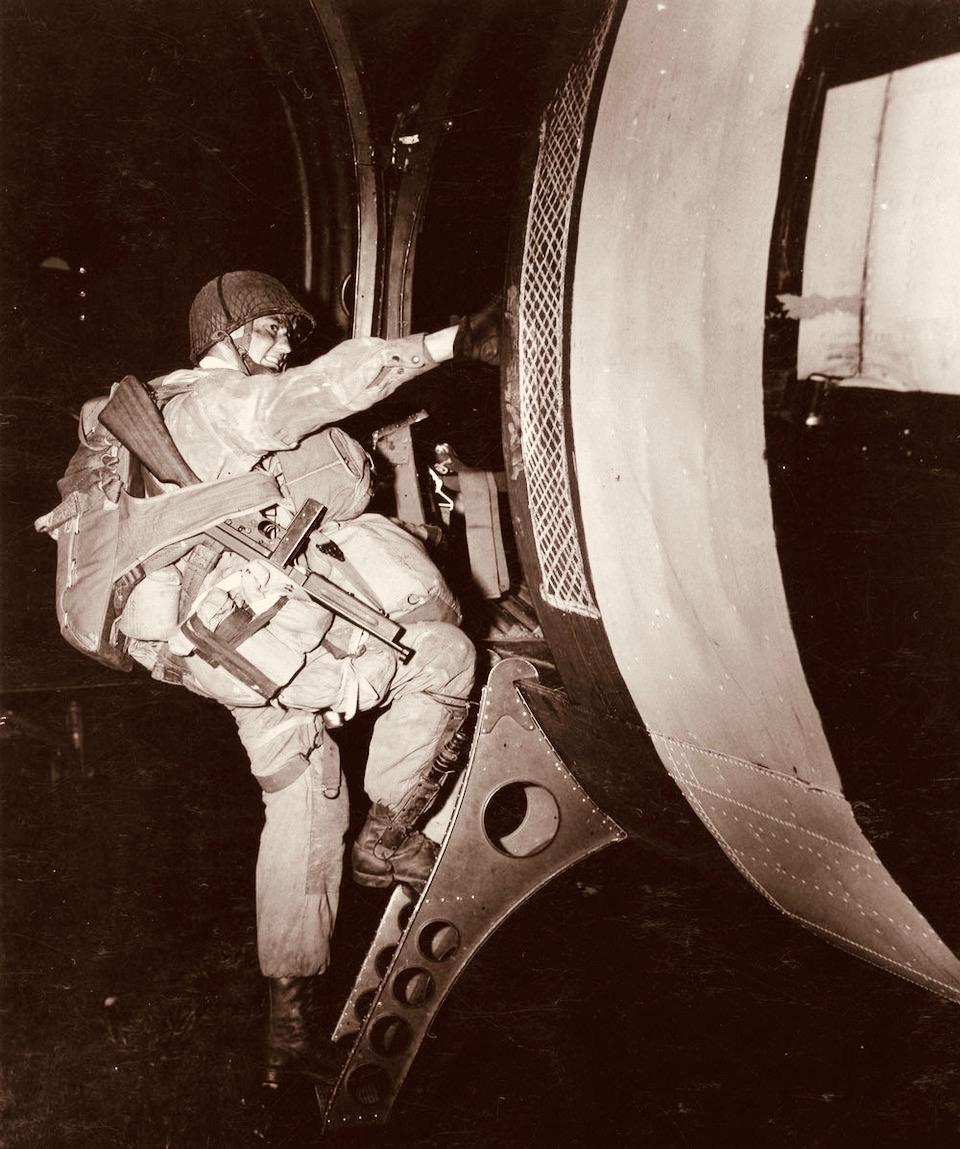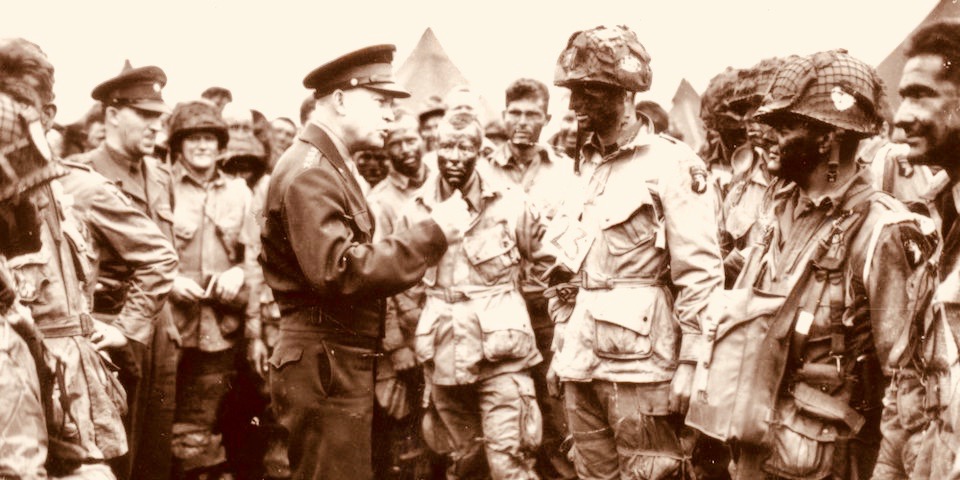The 4 most dangerous missions American troops carried out on D-Day, 75 years ago

A paratrooper with a Thompson M1 submachine and heavy equipment.The National WWII Museum
D-Day Stories: The Native American Medic Whose First Combat Was D-Day
Tune-in to D-Day: The Untold Stories, Sunday, June 2nd at 9/8c! Native elder Charles Norman Shay was a combat medic with 1st Infantry or “The Big Red One” – one of the first units to land ashore on Omaha Beach on D-Day. It was his very first day of combat in his life.
- The D-Day invasion sent roughly 156,000 Allied troops into Nazi-occupied France beginning on June 6, 1944. It was the largest seaborne invasion in history and a turning point in World War II that came at a catastrophic human toll.
- By the end of the Normandy campaign that began 75 years ago, hundreds of thousands of Allied and Axis soldiers and civilians had died and been wounded.
- The greatest risks were borne by American troops who seized clifftop artillery, set up defensive balloons to defend comrades from aerial attacks, and arrived in the first wave.

Gen. Dwight D. Eisenhower told his invasion force, “Your task will not be an easy one.” He was brutally right.The National WWII Museum
“Your task will not be an easy one. Your enemy is well-trained, well-equipped and battle-hardened. He will fight savagely.”
As the sun set on the blood-stained beaches of Normandy, France on June 6, 1944, Supreme Allied Commander Gen. Dwight D. Eisenhower’s message to the thousands of Allied troops dispatched to carry out the largest amphibious landing in military history rang true.
The invasion, codenamed Operation Neptune and remembered as D-Day, sent roughly 156,000 British, Canadian, and American troops to the Nazi-occupied French coast by air and sea, beginning the multi-month Battle of Normandy and the liberation of Western Europe from Hitler’s Wehrmacht. This week, as millions gather in Normandy to commemorate the 75th anniversary of D-Day, National WWII Museum senior historian Rob Citino emphasized that the impact of the landings came at a tremendous human toll. By the end of the Normandy campaign, hundreds of thousands of Allied and Axis soldiers and civilians had died and been wounded, with those involved in the initial landings suffering disproportionately. To read more go to the link below:
https://www.businessinsider.com/most-dangerous-jobs-american-troops-carried-out-on-d-day-2019-6

